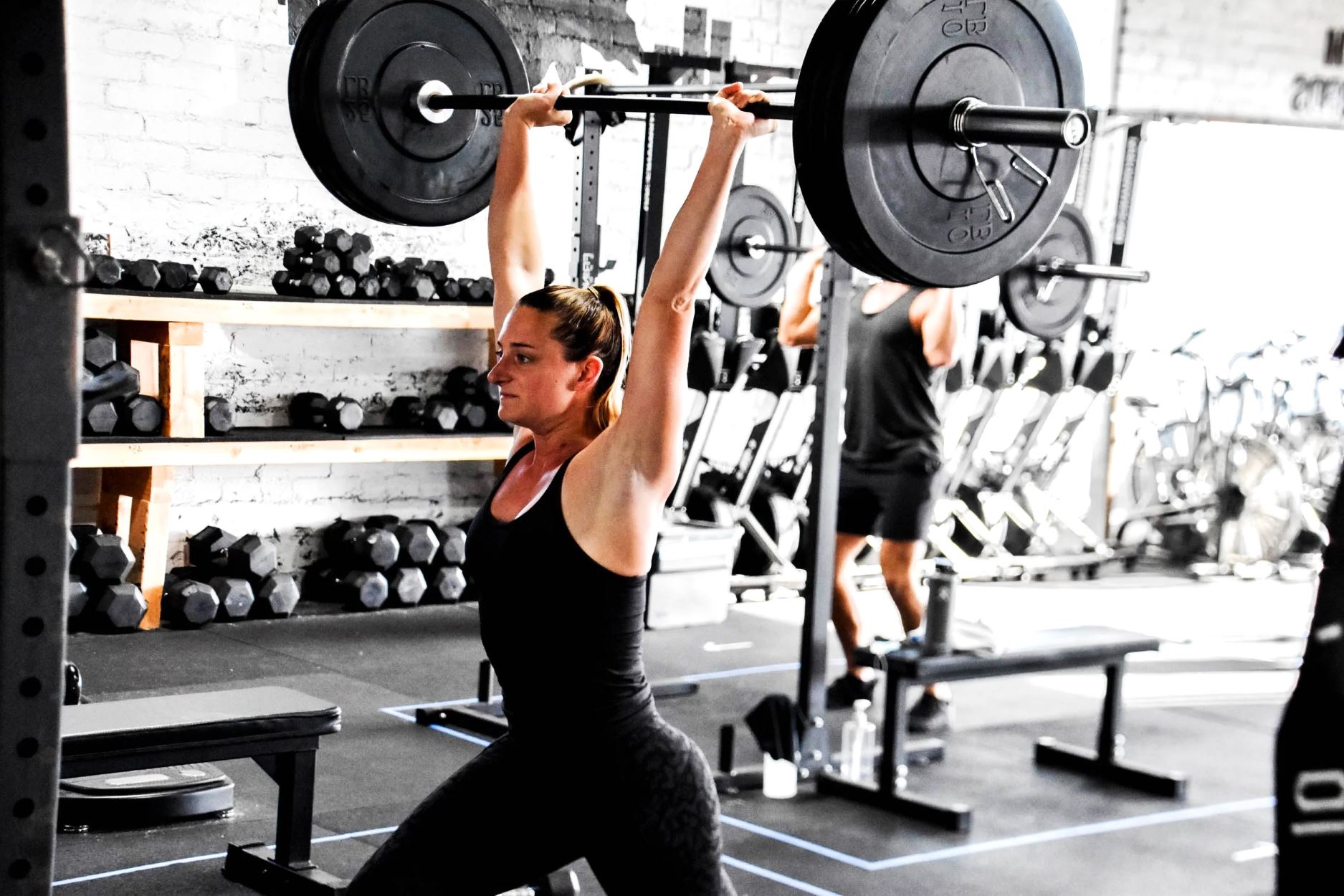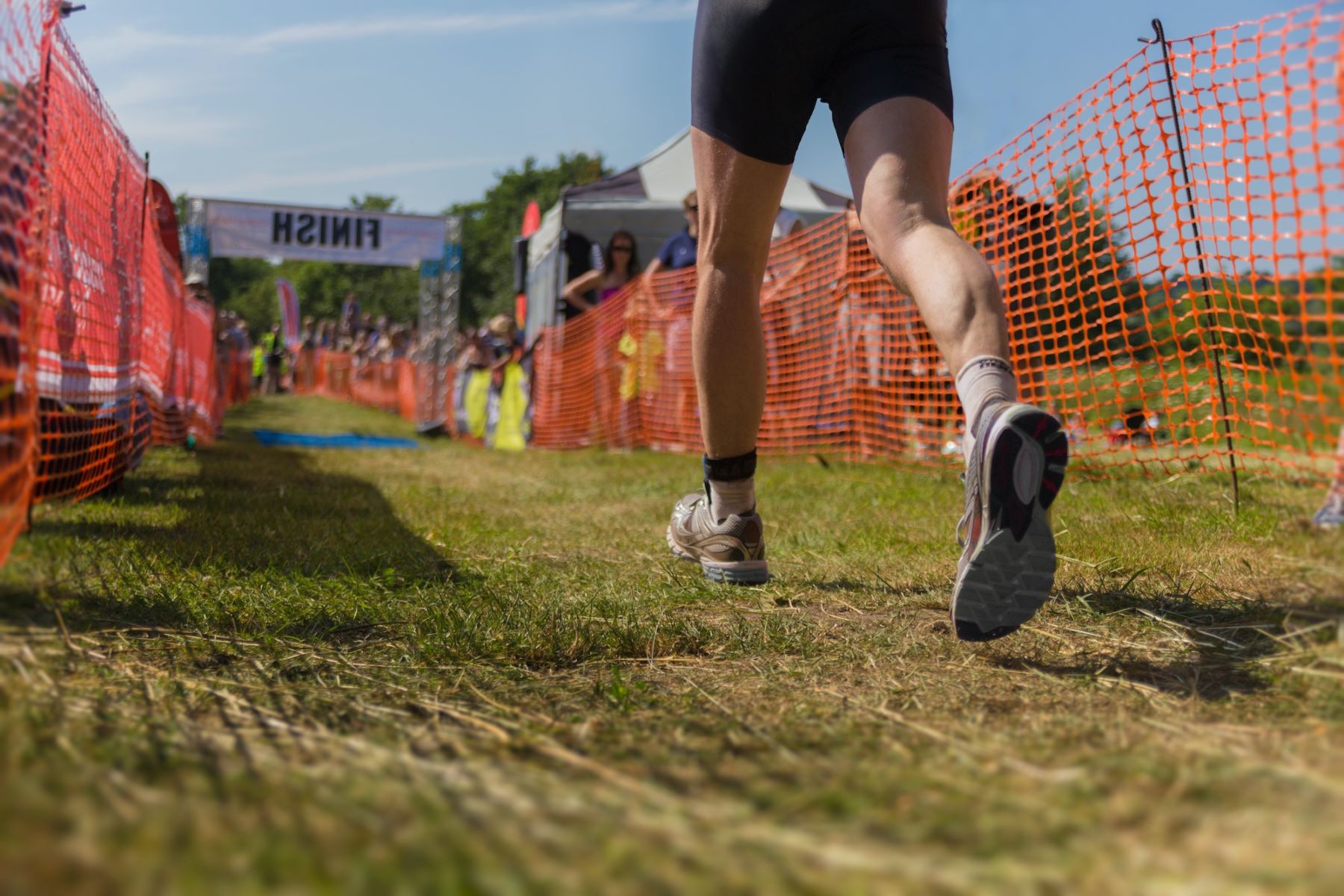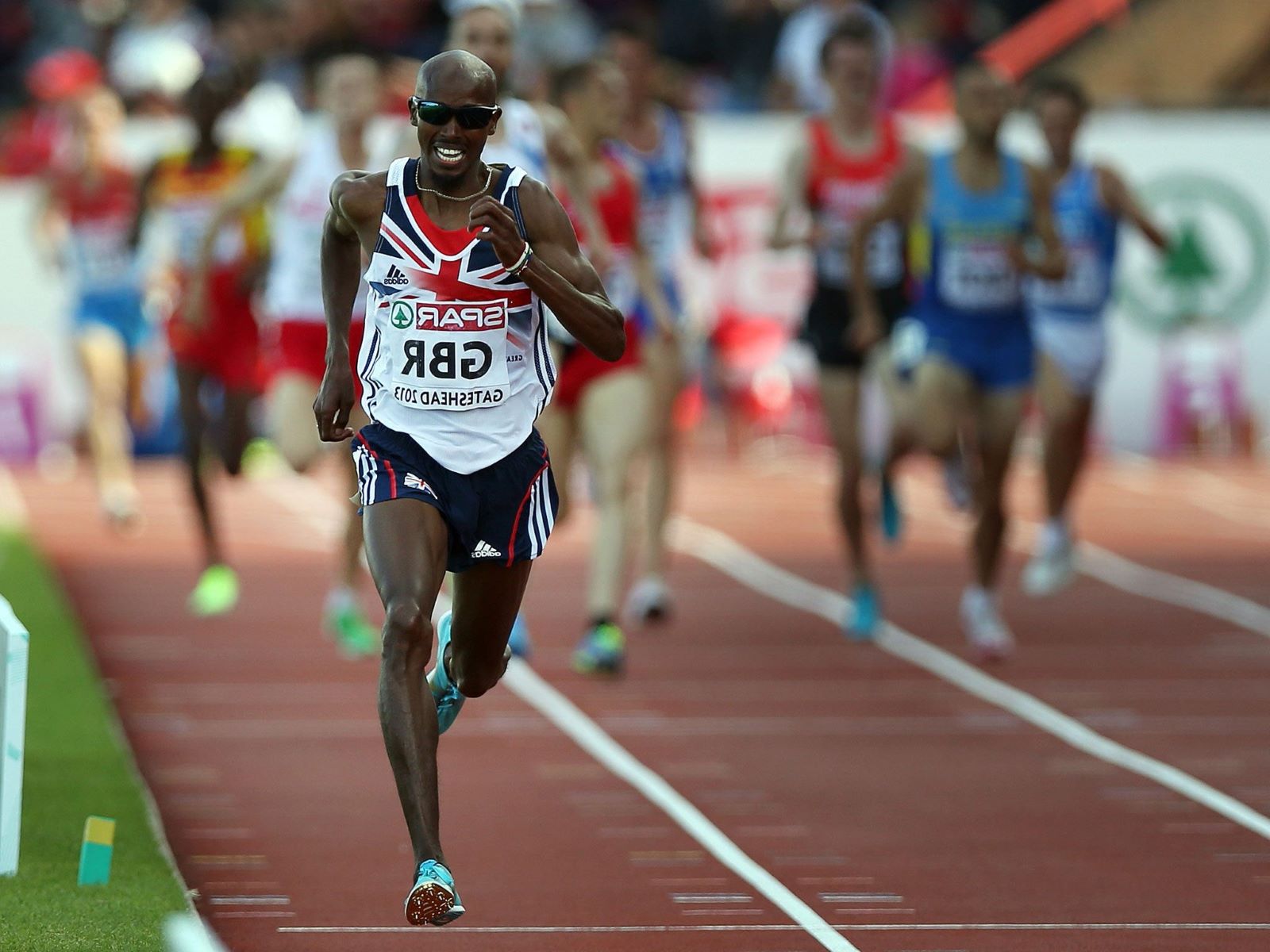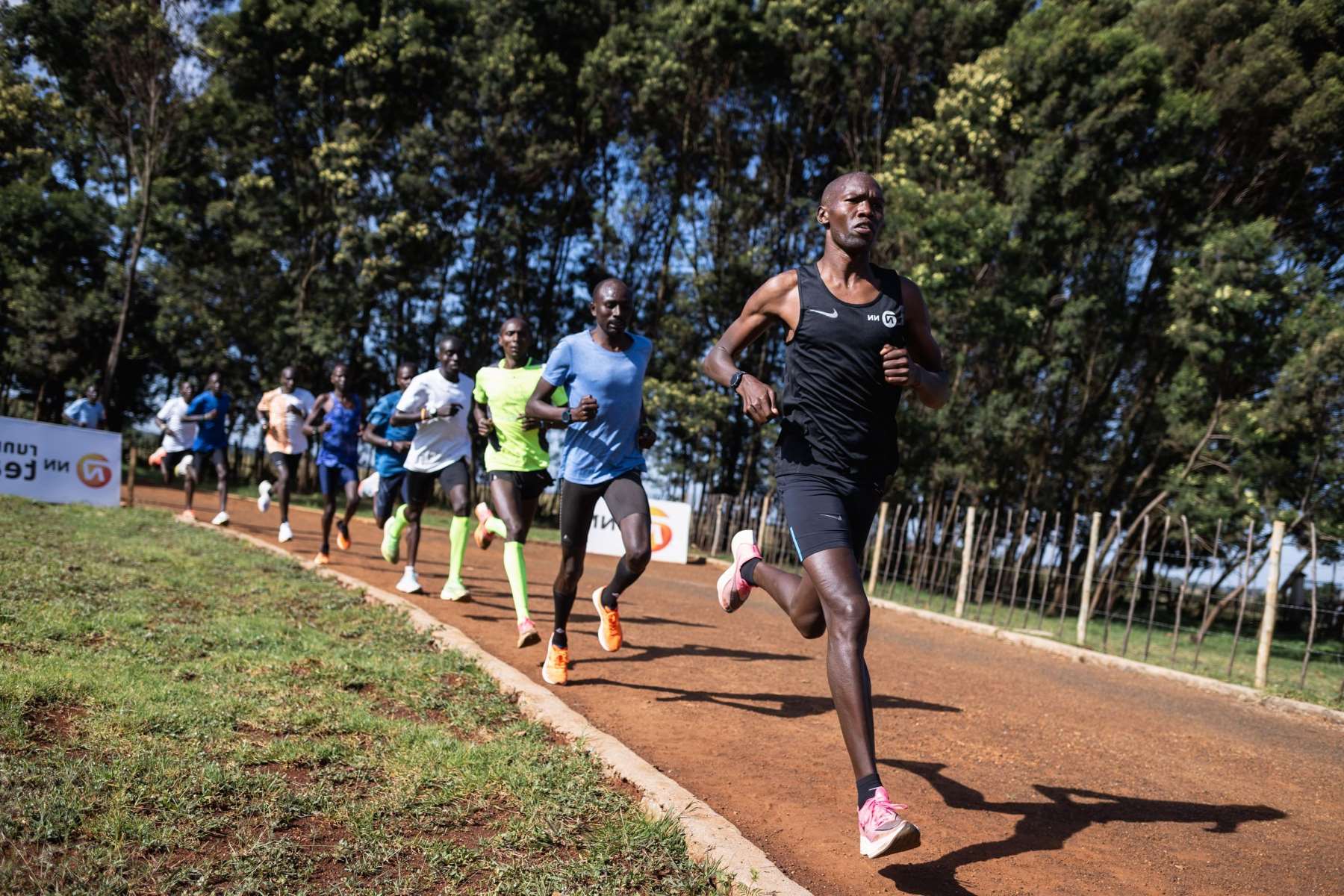Home>Training & Techniques>How To Improve Your Sprinting Speed In 9 Steps
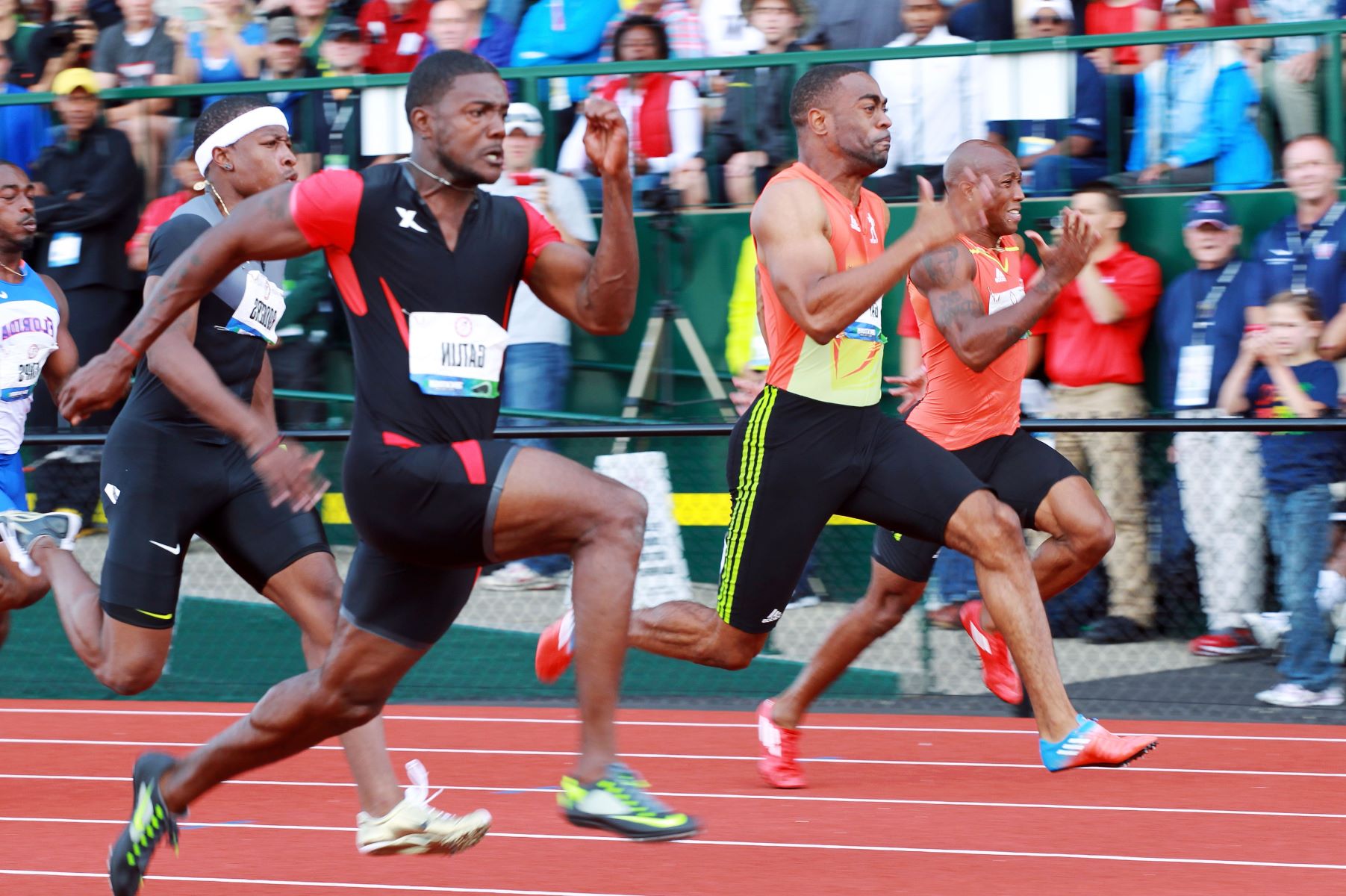

Training & Techniques
How To Improve Your Sprinting Speed In 9 Steps
Published: March 4, 2024
Learn the top 9 training and techniques to boost your sprinting speed. Improve your performance with these effective strategies.
(Many of the links in this article redirect to a specific reviewed product. Your purchase of these products through affiliate links helps to generate commission for Therunningadvisor.com, at no extra cost. Learn more)
Table of Contents
Introduction
Sprinting is a thrilling display of human athleticism, requiring explosive power, speed, and agility. Whether you're an athlete aiming to shave seconds off your 100-meter dash time or simply looking to enhance your overall fitness, improving your sprinting speed can be a rewarding endeavor. By incorporating targeted training techniques and adopting a holistic approach to your sprinting regimen, you can make significant strides in your speed and performance.
In this comprehensive guide, we will explore nine essential steps to help you enhance your sprinting speed. From proper warm-up routines to specialized strength training exercises, each step is designed to address key aspects of sprinting performance. By following these steps diligently and consistently, you can unlock your full potential as a sprinter and achieve remarkable progress in your speed and agility.
So, lace up your running shoes, and let's embark on this exhilarating journey to elevate your sprinting prowess. Whether you're a seasoned sprinter or a novice eager to enhance your speed, the following steps will equip you with the knowledge and techniques necessary to propel yourself to new heights in sprinting performance. Get ready to unleash your inner speed demon and leave a trail of dust in your wake as you sprint towards your speed goals.
Step 1: Proper Warm-Up
A proper warm-up is the cornerstone of any effective sprinting regimen. It serves as a crucial preparatory phase, priming your body for the intense physical demands of sprinting. Engaging in a thorough warm-up routine not only reduces the risk of injury but also optimizes your performance by enhancing muscle flexibility, blood circulation, and neural activation.
To kickstart your warm-up, begin with dynamic stretching exercises that target the major muscle groups involved in sprinting, such as the quadriceps, hamstrings, calves, and hip flexors. Dynamic stretches, including leg swings, walking lunges, and high knees, help loosen tight muscles and improve their elasticity, thereby increasing your range of motion and reducing the likelihood of strains or pulls during sprinting.
Following dynamic stretching, incorporate light cardiovascular activities to elevate your heart rate and increase blood flow to the muscles. This can involve a brief jog, cycling, or skipping rope for a few minutes. By gradually elevating your heart rate, you effectively prepare your cardiovascular system for the upcoming sprinting session, enhancing oxygen delivery to the muscles and promoting optimal performance.
In addition to physical warm-up exercises, it's essential to include specific sprinting drills in your warm-up routine. These drills mimic the explosive movements and mechanics of sprinting, effectively priming your neuromuscular system for the demands of high-speed running. Incorporate drills such as A-skips, B-skips, and high knees to reinforce proper sprinting mechanics, improve stride length, and activate the fast-twitch muscle fibers essential for sprinting speed.
By dedicating time and attention to a comprehensive warm-up routine, you set the stage for a productive sprinting session while safeguarding your body against potential injuries. Embrace the ritual of proper warm-up as a non-negotiable prelude to your sprinting endeavors, and you'll reap the rewards of enhanced performance and resilience on the track.
Step 2: Strength Training
Strength training forms the bedrock of a comprehensive sprinting regimen, playing a pivotal role in enhancing muscular power, explosiveness, and overall sprinting speed. By incorporating targeted strength training exercises into your routine, you can fortify the muscles essential for sprinting, amplify force production, and improve your ability to generate rapid acceleration and maintain top speed. Here's a detailed exploration of the key components of strength training for sprinters:
Compound Movements:
Integrate compound exercises such as squats, deadlifts, lunges, and hip thrusts into your strength training regimen. These multi-joint movements engage multiple muscle groups simultaneously, fostering overall strength development and functional movement patterns essential for sprinting. Focus on executing these exercises with proper form and gradually increasing the resistance to stimulate muscular adaptations conducive to sprinting speed.
Explosive Plyometrics:
Incorporate explosive plyometric exercises to cultivate rapid force production and enhance muscular explosiveness. Plyometric drills such as box jumps, depth jumps, and bounding exercises are particularly effective in developing the fast-twitch muscle fibers crucial for sprinting speed. By incorporating plyometrics into your strength training routine, you can amplify your ability to generate powerful strides and propel yourself forward with greater speed and efficiency.
Core Strengthening:
Prioritize core strengthening exercises to fortify the abdominal, oblique, and lower back muscles, which play a fundamental role in sprinting mechanics and stability. A strong and stable core not only facilitates efficient transfer of force during each stride but also helps minimize energy leakage, allowing you to maintain optimal posture and alignment throughout the sprinting motion.
Speed-Specific Resistance Training:
Implement speed-specific resistance training using tools such as resistance bands, sleds, or weighted vests to simulate sprinting against external resistance. This form of training targets the specific muscular adaptations required for overcoming resistance and accelerating with greater power. By incorporating speed-specific resistance exercises into your strength training regimen, you can effectively enhance your ability to generate explosive speed and overcome inertia during sprinting.
By integrating these key elements into your strength training program, you can systematically enhance your muscular strength, power, and explosiveness, thereby laying a solid foundation for significant improvements in sprinting speed and performance. Embrace the challenge of strength training as a vital component of your sprinting journey, and witness the transformative impact it has on your ability to unleash blazing speed on the track.
Step 3: Plyometric Exercises
Plyometric exercises are a cornerstone of sprinter training, renowned for their ability to cultivate explosive power, enhance muscular elasticity, and elevate overall sprinting performance. These dynamic and high-impact drills are designed to harness the stretch-shortening cycle of muscles, enabling athletes to generate rapid force and propel themselves with remarkable speed and agility. By incorporating plyometrics into your training regimen, you can unlock the potential for substantial improvements in sprinting speed and explosiveness.
Understanding the Science
At the core of plyometric training lies the concept of rapid muscle lengthening (eccentric phase) followed by an immediate contraction (concentric phase), exploiting the elastic properties of the muscles and tendons. This sequence of rapid stretching and contracting enables the muscles to store and release energy more efficiently, leading to heightened force production and acceleration. As a sprinter, mastering the art of plyometric exercises empowers you to harness this elastic energy to maximize your sprinting speed and stride power.
Key Plyometric Drills for Sprinters
-
Bounding Exercises: Bounding drills involve exaggerated, explosive strides that emphasize maximal horizontal and vertical displacement. By launching into powerful, elongated strides and achieving maximum airtime with each bound, sprinters can enhance their ability to cover ground swiftly and efficiently during sprints.
-
Box Jumps: Box jumps are a quintessential plyometric exercise that demands explosive lower-body power and coordination. By propelling yourself onto a raised platform or box with maximal force, you can develop the muscular explosiveness and reactive strength essential for rapid acceleration and powerful sprinting strides.
-
Depth Jumps: Depth jumps involve stepping off a raised platform and immediately exploding upward upon landing. This drill capitalizes on the stretch-shortening cycle to amplify muscular power and enhance the ability to generate force rapidly, mirroring the demands of explosive sprinting movements.
-
Single-Leg Hops: Single-leg plyometric drills, such as single-leg hops and bounds, target unilateral explosiveness and stability, addressing potential muscular imbalances and enhancing overall sprinting symmetry and efficiency.
Integration and Progression
When incorporating plyometric exercises into your training, it's crucial to start with foundational drills and gradually progress to more advanced variations as your strength and coordination improve. Additionally, integrating plyometrics at the appropriate phase of your training cycle, such as during the power development phase, can optimize their impact on sprinting speed and explosiveness.
By embracing the dynamic and transformative nature of plyometric exercises, sprinters can elevate their capacity for explosive force production, enhance muscular coordination, and unleash unparalleled speed on the track. With consistent and purposeful integration of plyometrics into your training regimen, you can propel yourself towards new heights of sprinting prowess, leaving a trail of electrifying speed in your wake.
Step 4: Technique Improvement
Refining and perfecting sprinting technique is a pivotal aspect of enhancing sprinting speed and efficiency. While raw power and strength are undeniably crucial, the manner in which this force is applied through precise biomechanical movements significantly influences sprinting performance. By focusing on technique improvement, sprinters can optimize their stride mechanics, body positioning, and overall running form to maximize speed and minimize energy wastage.
Biomechanical Analysis
Effective technique improvement begins with a comprehensive understanding of the biomechanics involved in sprinting. This entails analyzing key elements such as stride length, stride frequency, ground contact time, and body posture throughout the sprinting motion. By dissecting these components, sprinters can identify areas for refinement and pinpoint specific aspects of their technique that may be hindering optimal speed and efficiency.
Read more: Improve Your 5K Speed With This Workout
Stride Length and Frequency
Optimizing stride length and frequency is a central tenet of technique improvement for sprinters. Striking the right balance between elongated, powerful strides and rapid turnover is essential for achieving maximum speed. Through targeted drills and feedback from coaches or video analysis, sprinters can work on extending their stride length while maintaining swift turnover, thereby covering more ground with each step and propelling themselves forward with greater velocity.
Body Positioning and Posture
Maintaining proper body positioning and posture is critical for minimizing air resistance and maximizing forward propulsion. Sprinters must strive to achieve a slight forward lean from the ankles, engage in powerful arm drive, and ensure a strong and stable core to facilitate efficient force transmission. By honing these elements of running form, sprinters can reduce drag and enhance their ability to surge forward with minimal resistance, ultimately boosting their sprinting speed.
Foot Strike and Ground Contact
The manner in which the foot strikes the ground and the duration of ground contact significantly impact sprinting performance. Sprinters can benefit from refining their foot strike patterns to optimize force production and minimize braking forces. Additionally, reducing ground contact time through explosive push-off and swift recovery of the leg can contribute to enhanced speed and acceleration, allowing sprinters to maintain momentum and propel themselves with greater efficiency.
Integration and Practice
Technique improvement is an ongoing process that demands consistent practice and deliberate integration of refined mechanics into sprinting sessions. By incorporating targeted drills, feedback from coaches, and video analysis, sprinters can gradually internalize and ingrain optimized running form, transforming refined technique into second nature. Through relentless repetition and mindful focus on technique, sprinters can elevate their sprinting speed and efficiency, translating technical refinement into tangible performance gains on the track.
By prioritizing technique improvement as a cornerstone of their training, sprinters can unlock the latent potential within their biomechanics, harnessing refined running form to propel themselves towards new speed thresholds. With unwavering dedication to perfecting sprinting technique, sprinters can unleash the full extent of their speed and agility, surging past limitations and embracing the exhilarating realm of peak sprinting performance.
Step 5: Interval Training
Interval training stands as a cornerstone of sprinter's workout routines, renowned for its unparalleled ability to enhance cardiovascular endurance, elevate anaerobic capacity, and stimulate significant improvements in sprinting speed and performance. This structured approach to training involves alternating between bursts of high-intensity effort and periods of active or passive recovery, effectively challenging the body to adapt to the demands of sprinting while optimizing energy system development.
The hallmark of interval training lies in its capacity to push the boundaries of anaerobic threshold and foster rapid physiological adaptations conducive to sprinting. By subjecting the body to repeated cycles of intense exertion followed by brief recovery intervals, sprinters can elevate their tolerance to lactic acid accumulation, improve muscular endurance, and fine-tune their ability to sustain high-speed efforts over extended distances.
A fundamental component of interval training for sprinters is the customization of work-to-rest ratios to align with the specific demands of sprinting events. Shorter, more explosive sprint distances, such as the 100-meter dash, may benefit from shorter, high-intensity intervals with ample recovery periods to facilitate maximal exertion in each repetition. Conversely, longer sprint events, such as the 400-meter dash, may incorporate longer intervals with reduced recovery time to simulate the sustained effort required during the race.
Incorporating a diverse array of interval training protocols, including traditional sprint intervals, tempo runs, and fartlek sessions, can provide sprinters with a comprehensive stimulus for physiological adaptation and performance enhancement. Additionally, the integration of uphill sprints or resistance-based intervals can further amplify the muscular power and force production essential for explosive sprinting speed.
By embracing the rigors of interval training, sprinters can systematically elevate their anaerobic capacity, refine their ability to surge with relentless speed, and fortify their mental resilience in the face of high-intensity efforts. With each interval session, sprinters edge closer to the precipice of their speed potential, honing their bodies and minds to thrive in the exhilarating realm of sprinting excellence.
Step 6: Hill Sprints
Hill sprints stand as a formidable and transformative component of a sprinter's training arsenal, offering a dynamic and challenging terrain that fosters unparalleled improvements in sprinting speed, strength, and overall athletic prowess. As sprinters ascend the incline with explosive power and determination, they engage a myriad of physiological adaptations and biomechanical refinements that translate into remarkable gains in sprinting performance.
The incline of a hill serves as a natural resistance mechanism, compelling sprinters to exert greater force with each stride and conquer the gravitational pull that opposes their forward motion. This resistance fosters substantial enhancements in lower-body strength, particularly in the quadriceps, hamstrings, and glutes, as sprinters drive against the incline with intensified power and determination. The muscular fortitude cultivated through hill sprints not only amplifies sprinting speed but also bolsters overall athletic resilience and explosiveness.
Beyond the realm of physical strength, hill sprints instigate profound improvements in running mechanics and stride efficiency. As sprinters navigate the uphill terrain, they naturally adopt a more pronounced forward lean, driving their knees higher and engaging in powerful toe-off actions to surmount the incline. This refined running form translates into heightened stride power, enhanced knee drive, and optimized foot strike patterns, all of which converge to elevate sprinting speed and efficiency on flat surfaces.
Moreover, hill sprints serve as a crucible for mental fortitude and resilience, demanding unwavering determination and grit as sprinters confront the arduous ascent. The psychological tenacity honed through conquering challenging inclines transcends into the realm of flat sprints, empowering athletes to withstand the rigors of high-speed efforts with unyielding resolve and unwavering focus.
The integration of hill sprints into a sprinter's training regimen offers a multifaceted stimulus for holistic athletic development, encompassing physical strength, running mechanics, and mental fortitude. By embracing the relentless challenge of hill sprints, sprinters can propel themselves towards new speed thresholds, surmounting inclines with unbridled determination and emerging as refined and resilient sprinting powerhouses.
Step 7: Proper Nutrition
Proper nutrition stands as a cornerstone of sprinter's performance optimization, wielding profound influence over energy levels, recovery capacity, and overall sprinting prowess. By meticulously fueling the body with a balanced array of macronutrients, vitamins, and minerals, sprinters can fortify their physiological resilience, enhance muscular recovery, and sustain peak performance throughout training and competition.
Macronutrient Balance
Adequate intake of macronutrients, including carbohydrates, proteins, and fats, is pivotal for sprinters aiming to maximize their speed and endurance. Carbohydrates serve as the primary fuel source for high-intensity sprinting efforts, replenishing muscle glycogen stores and sustaining energy levels during training and competition. Incorporating complex carbohydrates from sources such as whole grains, fruits, and vegetables ensures sustained energy release and optimal glycogen replenishment, empowering sprinters to unleash explosive speed with unwavering endurance.
Proteins play a fundamental role in muscle repair, recovery, and growth, making them indispensable for sprinters seeking to fortify their muscular resilience and power. By consuming high-quality protein sources, such as lean meats, poultry, fish, legumes, and dairy products, sprinters can facilitate efficient muscle repair and adaptation, fostering enhanced sprinting speed and overall athletic performance.
Healthy fats, derived from sources such as avocados, nuts, seeds, and fatty fish, contribute to optimal hormone production, joint lubrication, and cellular function, bolstering sprinters' overall health and resilience. By integrating a balanced array of healthy fats into their diet, sprinters can optimize their body's capacity for sustained energy production and recovery, underpinning their ability to sustain peak sprinting performance.
Hydration and Electrolyte Balance
Proper hydration is non-negotiable for sprinters striving for optimal speed and endurance. Adequate fluid intake, comprising water and electrolyte-rich beverages, is essential for maintaining cellular function, regulating body temperature, and facilitating efficient nutrient transport. Hydration plays a pivotal role in muscle function and recovery, directly impacting sprinters' ability to sustain high-speed efforts and expedite post-training or post-competition recovery.
Electrolyte balance, encompassing essential minerals such as sodium, potassium, magnesium, and calcium, is critical for optimizing muscular contraction, nerve function, and fluid balance within the body. Sprinters must prioritize replenishing electrolytes lost through sweat during intense training sessions, ensuring seamless neuromuscular function and sustained sprinting performance.
Nutrient Timing and Recovery
Strategic nutrient timing, particularly surrounding training sessions and competitions, can significantly impact sprinters' performance and recovery. Consuming a balanced meal or snack comprising carbohydrates and proteins within the post-exercise recovery window accelerates muscle glycogen replenishment, initiates muscle repair processes, and primes the body for subsequent training sessions or races. Additionally, integrating pre-workout nutrition strategies, such as consuming easily digestible carbohydrates and a moderate amount of protein, can optimize energy availability and muscular readiness for high-intensity sprinting efforts.
By meticulously attending to their nutritional needs, sprinters can elevate their capacity for sustained speed, power, and resilience, transcending limitations and surging towards the pinnacle of sprinting excellence. With a steadfast commitment to proper nutrition, sprinters can harness the transformative potential of optimal fueling, propelling themselves towards new speed thresholds and embracing the exhilarating realm of peak sprinting performance.
Step 8: Rest and Recovery
Rest and recovery constitute the unsung heroes of a sprinter's training journey, wielding profound influence over performance, injury prevention, and overall physiological resilience. Amidst the relentless pursuit of speed and athletic excellence, sprinters must recognize the pivotal role of adequate rest and strategic recovery practices in optimizing their training adaptations and sustaining peak performance.
The rigors of sprinting training, characterized by high-intensity efforts and explosive muscular exertion, necessitate deliberate periods of rest to facilitate physiological repair and adaptation. During sprinting sessions, muscle fibers undergo microscopic damage and fatigue accumulates within the neuromuscular system, underscoring the imperative of allowing the body ample time to recuperate and regenerate. Embracing rest as a strategic ally, sprinters can harness the transformative power of recovery, fortifying their bodies and minds for the relentless pursuit of speed and agility.
Strategic recovery encompasses a multifaceted approach, encompassing physical, mental, and emotional restoration. Adequate sleep stands as a cornerstone of effective recovery, providing the body with invaluable opportunities for tissue repair, hormone regulation, and neural consolidation. By prioritizing consistent and restorative sleep patterns, sprinters can optimize their capacity for muscular recovery, mental acuity, and overall physiological resilience, laying the groundwork for sustained sprinting performance.
In addition to sleep, targeted recovery modalities such as foam rolling, stretching, and massage therapy can expedite muscular repair, alleviate tension, and enhance flexibility, promoting optimal readiness for subsequent training sessions. These practices not only mitigate the risk of overuse injuries but also foster heightened muscular pliability and range of motion, essential for executing powerful and efficient sprinting strides.
Mental and emotional recovery are equally vital components of the rest and recovery equation, as the demands of sprinting training can exact a toll on athletes' psychological well-being. Engaging in mindfulness practices, relaxation techniques, and stress management strategies empowers sprinters to cultivate mental resilience, mitigate performance anxiety, and foster a balanced and harmonious mindset conducive to optimal sprinting performance.
By embracing rest and recovery as indispensable pillars of their training regimen, sprinters can fortify their bodies and minds, transcending limitations and surging towards the precipice of their speed potential. With a steadfast commitment to strategic recovery practices, sprinters can harness the transformative power of rest, propelling themselves towards new speed thresholds and embracing the exhilarating realm of peak sprinting performance.
Step 9: Consistent Practice and Patience
Consistent practice and patience form the bedrock of sprinting mastery, embodying the unwavering dedication and steadfast resolve required to ascend to the zenith of sprinting performance. The pursuit of speed and agility is a relentless odyssey, demanding unyielding commitment to the refinement of technique, the cultivation of strength, and the relentless pursuit of excellence. Through consistent practice, sprinters imbue their muscles with the memory of precision and power, honing their neuromuscular coordination and fortifying their bodies for the rigors of high-speed efforts.
Patience emerges as a guiding virtue, tempering the fervor of ambition with the wisdom of gradual progress. Sprinting prowess is not forged in haste but rather in the crucible of persistent effort and incremental gains. Each stride, each sprint, and each training session contributes to the tapestry of sprinting mastery, weaving together the threads of resilience and determination. Patience empowers sprinters to weather the ebb and flow of progress, embracing setbacks as opportunities for growth and refinement.
Consistent practice and patience converge to form an indomitable spirit, propelling sprinters towards the realization of their speed potential. The track becomes a canvas for relentless pursuit, each step a testament to the unwavering commitment to the pursuit of speed and excellence. Through the crucible of consistent practice and the crucible of consistent practice and patience, sprinters emerge as refined and resilient athletes, poised to unleash their full speed potential and etch their names in the annals of sprinting greatness.

